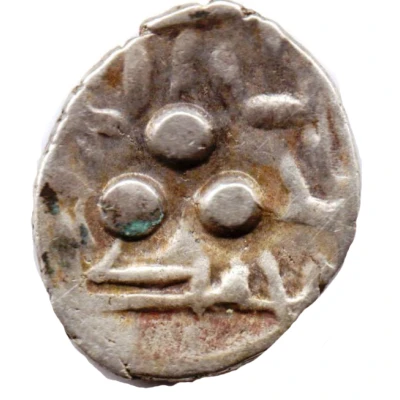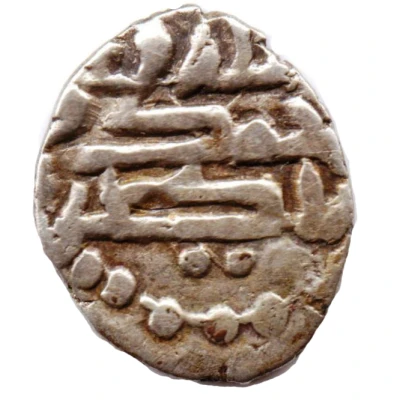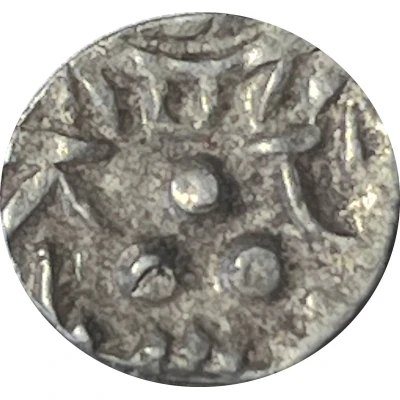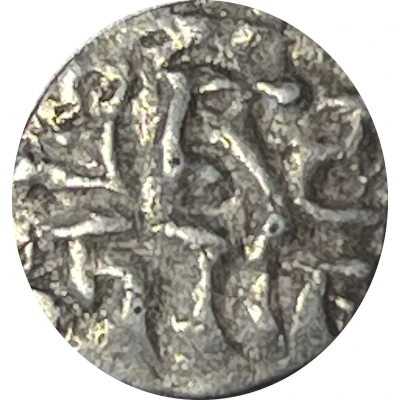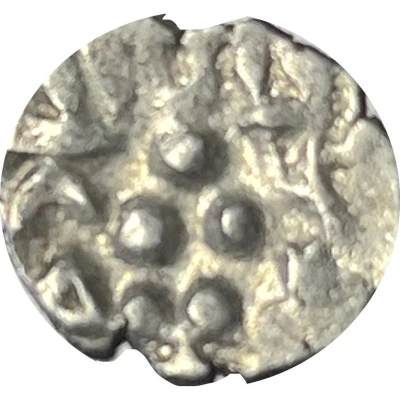
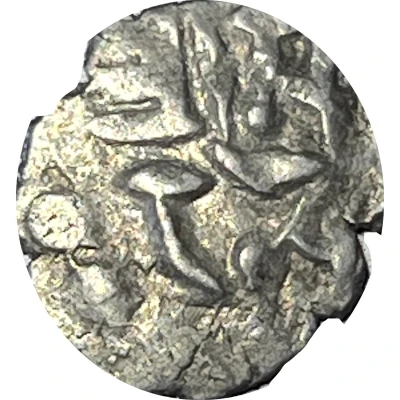

1 Damma - Mihira Deva ND
| Silver | 0.62 g | - |
| Issuer | Emirate of Multan (Indian states) |
|---|---|
| Type | Standard circulation coin |
| Years | 712-856 |
| Value | Damma (⅙) |
| Currency | Dinar (712-918) |
| Composition | Silver |
| Weight | 0.62 g |
| Thickness | 10 mm |
| Shape | Round (irregular) |
| Demonetized | Yes |
| Updated | 2024-10-05 |
| Numista | N#389972 |
|---|---|
| Rarity index | 95% |
Comment
From https://ancient-indian-coins.blogspot.com/2019/01/mysterious-coins-from-multan-before-and.html :
Three dots, stylized Brahmi "Sri" above, Brahmi letters "Ta" and "Pa" in fields, below Lillah Mih in arabic / Brahmi legend "Sri Mi Hi / Ra De Va". 10mmx12mm, 0.62 grams. Unpublished and very rare.
On this type the name written in Brahmi - Lord Mihira Deva (a completely Hindu name) seems to be repeated on the reverse and "In Allah Mih" ("Mih" almost certainly a short form of "Mihira"). It is possible that a local Hindi ruler embraced Islam (based on "Lillah"...) but issued coins under his old name as well. Interestingly, "Mihira" means "Sun" - probably a reference to the giant and famous sun temple in Multan After the conquest of Multan by Umayyad Caliphate in 8th Century AD, under Muhammad bin Qasim, the Sun Temple became a source of great income for the Muslim invaders. Muhammad bin Qasim 'made captive of the custodians of the budd, numbering 6000' and looted its wealth, sparing the idol — which was made of wood, covered with red leather and two red rubies for its eyes and wearing a gem-studded gold crown — 'thinking it best to leave the idol where it was, but hanging a piece of cow's flesh on its neck by way of mockery'. This coin, with it's reference to "Mihira" in both Hindu and Muslim context, might be a link to these events.
Schematic of the full inscription are available at the aforementioned site as the design is larger than the coin.
Interesting fact
The 1 Damma coin from the Emirate of Multan, which was issued during the reign of Mihira Deva (712-856 CE), features a unique blend of Indian and Islamic influences in its design. The coin's obverse side bears a depiction of the Hindu deity Lord Shiva, while the reverse side features an inscription in Arabic script that reads "Al-Mu'tasim bi'llah" (meaning "Al-Mu'tasim in the name of God"). This blending of religious symbols and languages reflects the cultural diversity and religious tolerance of the Emirate of Multan during that time period.
